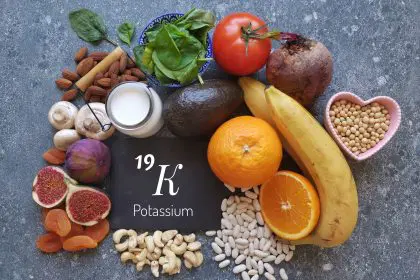The fats you consume play vital roles throughout your body, from providing energy and supporting cell structure to enabling hormone production and helping absorb essential nutrients. However, not all dietary fats affect your health equally. Saturated fats in particular have generated significant attention for their potential impact on cardiovascular health and overall wellness. Understanding these fats – where they come from, how they affect your body, and what alternatives exist – allows you to make more informed dietary decisions.
How saturated fats differ from other fats
At the molecular level, saturated fats have a distinct structure that sets them apart from other types. Their carbon chains contain no double bonds between carbon atoms, making them “saturated” with hydrogen molecules. This structural difference creates important physical properties – saturated fats remain solid at room temperature and tend to be more shelf-stable than their unsaturated counterparts.
This molecular structure also affects how your body processes these fats. When consumed, saturated fats interact differently with your digestive system, liver, and cardiovascular system compared to unsaturated fats. These differences help explain their varying health impacts.
Your body actually produces some saturated fat naturally, as it serves essential functions. However, excessive dietary intake presents potential concerns. Current dietary guidelines suggest limiting saturated fat consumption to less than 10% of your daily calories – approximately 22 grams for someone consuming 2,000 calories daily.
Common foods surprisingly high in saturated fat
While most people recognize certain foods as saturated fat sources, others contain surprising amounts. Tropical oils rank among the most concentrated plant-based sources. Coconut oil contains approximately 82% saturated fat by composition, with one tablespoon providing around 12 grams. Palm oil and palm kernel oil similarly contain high saturated fat levels despite their plant origins.
Animal products contribute significantly to saturated fat intake in many diets. Full-fat dairy products vary considerably in their saturated fat content. Butter delivers approximately 7 grams per tablespoon. Heavy cream provides about 5 grams per quarter cup. Whole milk contains roughly 4.5 grams per cup. Various cheeses range from 5 to 10 grams per 1-ounce serving.
Meat products demonstrate similar variation. Different cuts from the same animal contain vastly different saturated fat amounts depending on their marbling and visible fat content. For example, prime rib (3 ounces cooked) contains approximately 10 grams. 80/20 ground beef (3 ounces cooked) provides about 6 grams. Chicken thigh with skin (3 ounces cooked) contains roughly 3 grams. Chicken breast without skin (3 ounces cooked) provides only about 1 gram.
Processed and prepared foods often contain hidden saturated fats from multiple sources. Fast food meals frequently combine high-saturated-fat ingredients, with a typical burger-and-fries combination potentially containing over 15 grams. Baked goods made with butter or shortening similarly provide significant amounts, with a single muffin or pastry sometimes containing 5-8 grams.
The complex relationship with heart health
The connection between saturated fat consumption and cardiovascular disease has evolved considerably over decades of research. Early studies established correlations between high saturated fat intake and elevated LDL (low-density lipoprotein) cholesterol levels. Since elevated LDL correlates with increased heart disease risk, dietary guidelines historically recommended strict saturated fat limitation.
However, more recent research reveals a more nuanced picture. Different saturated fatty acids appear to affect cholesterol levels differently. For example, stearic acid (found in chocolate and beef) shows minimal impact on LDL levels compared to palmitic acid (prevalent in palm oil and meat). This variation suggests not all saturated fats affect heart health identically.
The food source context also matters significantly. Saturated fat consumed within minimally processed foods like yogurt appears to affect health differently than equivalent amounts from highly processed foods. This difference likely stems from other beneficial compounds present in less processed options, including probiotics, calcium, and various micronutrients that may counterbalance potential negative effects.
Replacement nutrient choice significantly impacts health outcomes when reducing saturated fat intake. Research indicates replacing saturated fats with polyunsaturated fats (like those in vegetable oils and nuts) reduces heart disease risk more effectively than replacing them with refined carbohydrates. In fact, some studies suggest that substituting saturated fats with refined carbohydrates potentially increases cardiovascular risk.
Beyond cholesterol: Other health considerations
While cholesterol impacts receive the most attention, saturated fats influence health through multiple additional pathways. Inflammation regulation represents one significant mechanism. Some evidence suggests certain saturated fatty acids may promote inflammatory processes, particularly when consumed in large amounts. This inflammation potentially contributes to various chronic conditions beyond heart disease.
Insulin sensitivity presents another consideration. Research indicates potential connections between high saturated fat intake and reduced insulin sensitivity in some individuals, potentially increasing type 2 diabetes risk. However, this relationship appears complex and likely depends on genetic factors, overall dietary patterns, and total caloric intake.
Weight management concerns arise frequently in saturated fat discussions. All fats provide 9 calories per gram (compared to 4 calories per gram for proteins and carbohydrates), making them calorie-dense. However, evidence suggests dietary fat composition may matter more than total fat content for weight management. Some research indicates that Mediterranean-style diets containing moderate fat levels from varied sources support healthy weight better than very low-fat approaches.
Gut microbiome effects represent an emerging research area. Preliminary evidence suggests different dietary fats influence gut bacteria composition differently. Some studies indicate diets high in certain saturated fats may alter gut bacteria balance in ways that potentially promote inflammation and metabolic disturbances, though this research remains preliminary.
Individual variation factors significantly into outcomes
Genetic differences substantially impact how individuals respond to saturated fat consumption. Some people demonstrate “hyper-responder” patterns, with their cholesterol levels rising significantly following saturated fat intake. Others show minimal blood lipid changes despite similar consumption patterns. These differences likely stem from genetic variations affecting lipid metabolism pathways.
Age and life stage also influence how saturated fats affect health. Growing children require more total fat, including some saturated fat, to support proper development. Similarly, older adults may process dietary fats differently than younger individuals due to changes in metabolism and digestive function.
Existing health conditions substantially modify saturated fat’s health impact. People with specific lipid disorders, established cardiovascular disease, or certain genetic conditions may experience greater negative effects from high saturated fat intake compared to those without these conditions.
Activity level represents another important variable. Physically active individuals typically process dietary fats more efficiently than sedentary people. Higher activity levels may partially offset potential negative effects of moderate saturated fat consumption through improved metabolic function and enhanced fat utilization for energy.
Smarter saturated fat choices for everyday eating
Rather than eliminating all saturated fat sources, focusing on quality and context often proves more practical. For dairy products, fermented options like yogurt and kefir provide beneficial probiotics alongside their fat content. Similarly, cheese consumed in moderate portions delivers significant calcium, protein, and other nutrients despite its saturated fat content.
When choosing meat, emphasizing quality over quantity makes a significant difference. Grass-fed beef typically contains more beneficial fatty acids alongside its saturated fat compared to conventionally raised options. Similarly, unprocessed meats generally provide greater nutritional value than processed varieties like sausages and deli meats, which often contain additional preservatives and sodium.
Portion control represents a practical approach to managing saturated fat intake without complete elimination. Using smaller amounts of high-fat ingredients strategically often satisfies taste preferences while moderating overall consumption. For example, using real butter in small amounts rather than larger quantities of highly processed butter substitutes may prove both more satisfying and potentially healthier.
Cooking methods significantly impact the final saturated fat content of meals. Grilling, baking, and broiling generally require less added fat than frying or sautéing. Similarly, allowing fat to drain during cooking reduces the final fat content of various dishes without sacrificing flavor.
Healthier fat alternatives worth incorporating
Monounsaturated fats offer excellent alternatives for many cooking applications. Olive oil, particularly extra virgin varieties, contains predominantly monounsaturated fat and provides additional beneficial compounds including polyphenols with antioxidant properties. Similarly, avocados and avocado oil deliver monounsaturated fats alongside fiber, potassium, and various micronutrients.
Polyunsaturated fats, particularly omega-3 fatty acids, demonstrate significant health benefits worth emphasizing. Fatty fish like salmon, mackerel, and sardines provide concentrated omega-3 sources associated with reduced inflammation and improved cardiovascular outcomes. Plant sources including flaxseeds, chia seeds, and walnuts offer alpha-linolenic acid, which your body partially converts to beneficial omega-3 forms.
Nuts and seeds generally provide excellent fat profiles alongside protein, fiber, and micronutrients. Different varieties offer different specific benefits. For example, walnuts provide omega-3s while almonds deliver vitamin E. Their combination of healthy fats, protein, and fiber also promotes satiety, potentially helping with weight management.
Plant-based protein alternatives frequently contain more favorable fat profiles than their animal counterparts. Legumes, including beans, lentils, and peas, provide protein with minimal saturated fat. Similarly, properly prepared tofu and tempeh offer complete proteins with predominantly unsaturated fat content.
Practical strategies for reducing saturated fat intake
Reading nutrition labels effectively helps identify hidden saturated fat sources. Beyond checking total saturated fat content, examining ingredient lists proves valuable. Ingredients like “hydrogenated oils,” “palm oil,” and various animal-derived ingredients indicate saturated fat presence. Similarly, understanding portion sizes listed on labels helps translate percentage information into practical consumption decisions.
Smart substitutions in cooking and baking maintain flavor while improving nutritional profiles. Applesauce can replace butter in many baking recipes, while mashed avocado works well in others. Greek yogurt substitutes effectively for sour cream in various recipes, and plant-based milks provide alternatives to whole dairy milk with significantly less saturated fat.
Restaurant ordering strategies help moderate saturated fat consumption during social occasions. Requesting dressings and sauces on the side allows controlling portions, while choosing grilled, baked, or steamed options generally reduces saturated fat compared to fried alternatives. Similarly, splitting rich dishes and complementing them with vegetable-based sides creates more balanced meals.
Gradual implementation rather than drastic changes typically proves more sustainable. Transitioning cooking habits incrementally – perhaps starting with breakfast modifications before addressing lunch and dinner – allows taste preferences to adjust gradually. This approach typically leads to better long-term adherence than abrupt comprehensive changes.
A balanced perspective on nutritional choices
Context within overall dietary patterns matters more than individual nutrients. Mediterranean and traditional Asian dietary patterns demonstrate that moderate fat consumption from varied sources within vegetable-rich diets supports excellent health outcomes. These traditional patterns emphasize food quality, diversity, and preparation methods rather than isolated nutrient targets.
Food enjoyment and cultural significance deserve consideration alongside nutritional factors. Traditional dishes with cultural importance may contain saturated fat yet deliver important psychological and social benefits when enjoyed in moderation and proper context. Completely eliminating such foods potentially creates unnecessary restrictions that undermine dietary sustainability.
Long-term sustainability should guide dietary modifications rather than short-term perfection. Approaches that can be maintained consistently over years typically yield better health outcomes than highly restrictive patterns followed briefly. Finding personal balance with saturated fat intake that aligns with both health goals and quality of life represents the most practical approach for most individuals.
The emerging nutritional paradigm increasingly focuses on overall dietary patterns rather than vilifying specific nutrients. This perspective recognizes that foods contain complex combinations of compounds that interact in ways not fully captured by examining isolated components. Within this framework, moderate saturated fat consumption within nutrient-dense, minimally processed dietary patterns appears compatible with excellent health for many people.


















